It’s always exciting to start something new. Even more exciting to write a first blog about it. So here it is.
In the fall I started a new major study that will keep me entertained for years to come. I will do this research in the open, I hope we will do this together.
This month I will be sharing a few blogs about this big plan, how I got here, how you can get involved, and more. You can also sign up for my newsletter. This way you don’t miss anything and you don’t have to check this blog or Linkedin yourself to see if there’s something new.
In this first blog I will tell you what I want to research in the coming years.
A month of spaghetti
It’s been a while, but in November 2020 I kept track of what I experienced with the Dutch government for a month. On a timeline you could see which things I did at government counters, whether these counters were automated or manned and which implementing organizations and policy departments were involved. I also looked at what legislation and social value was above it.
It turned out to be a big spaghetti and I wrote this blog about it. Later, together with colleague Maureen Hermeling, I did this exercise with an employee of the Money Affairs desk of the Municipality of The Hague with one of their cases.
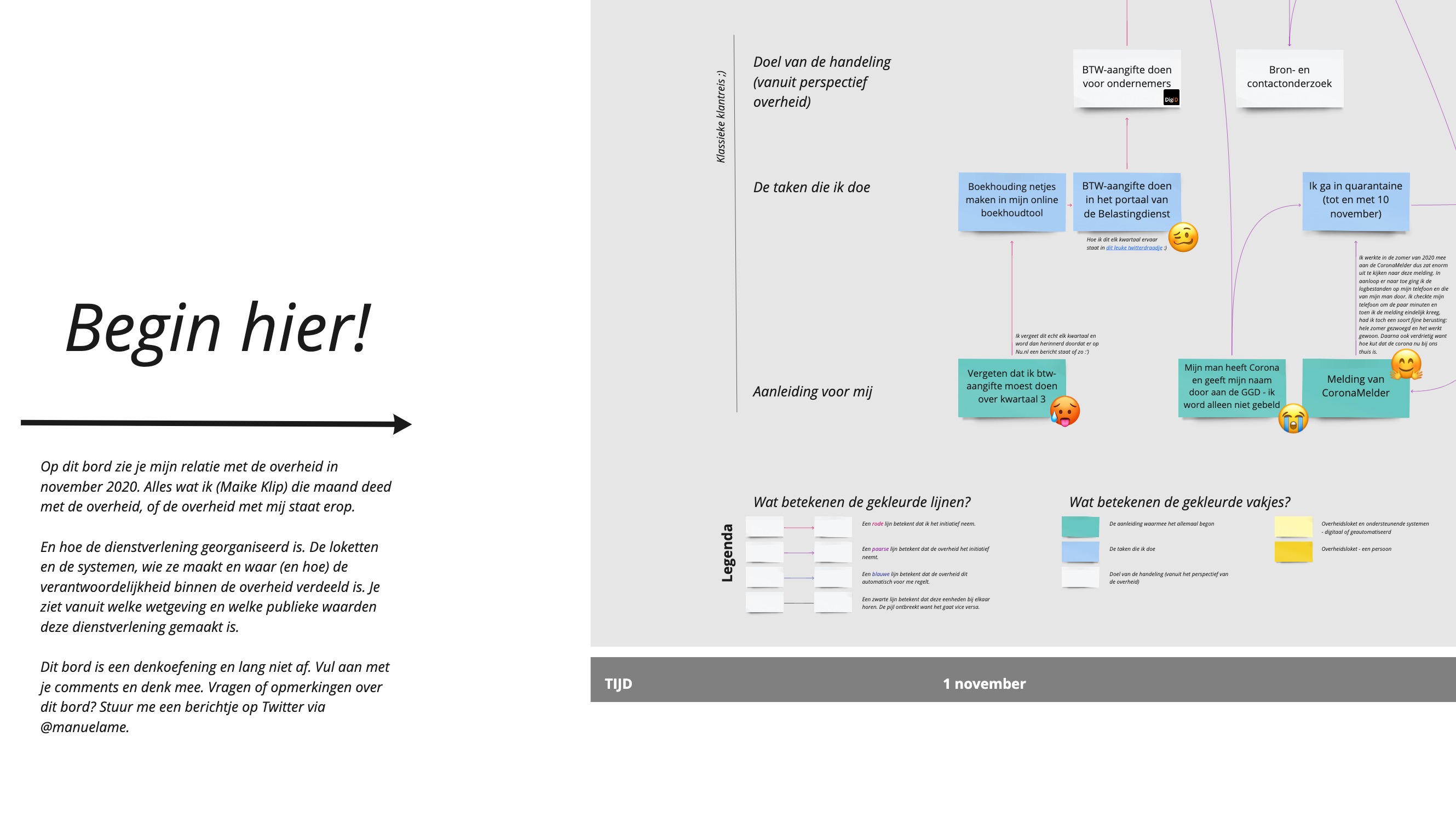
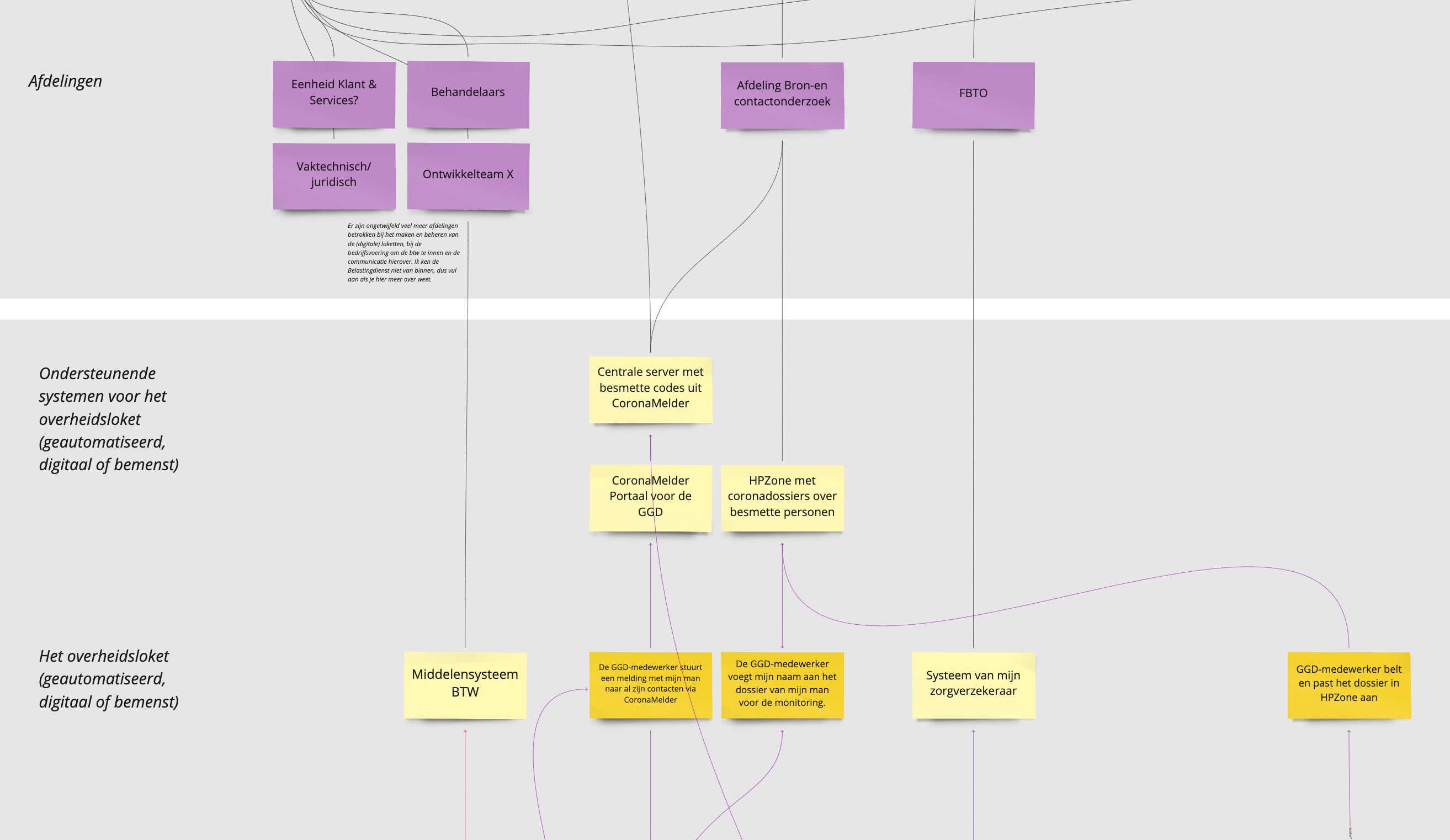

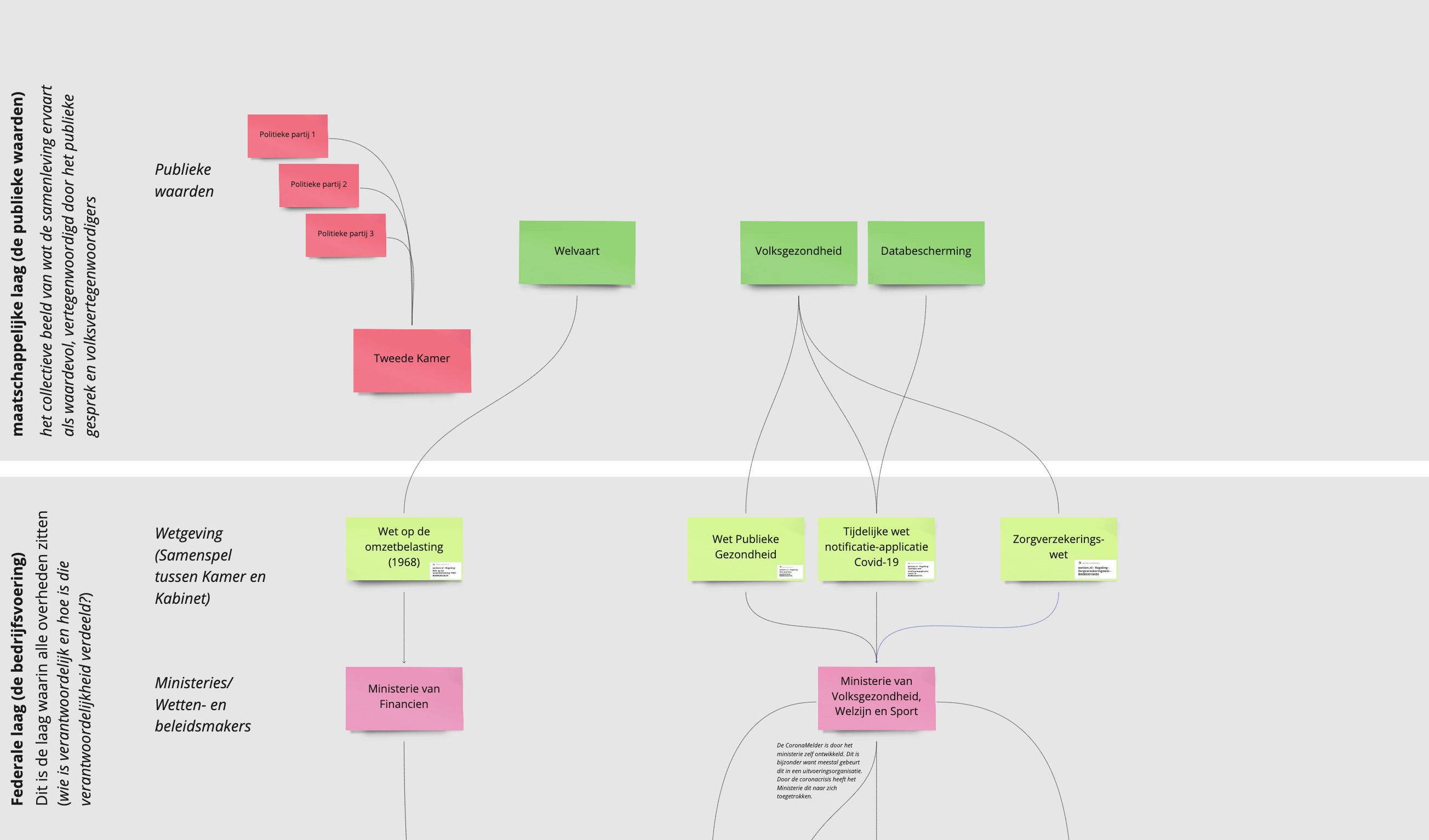
I learned a couple things:
- For the government, laws and services are always bulk. It has these kinds of timelines with all citizens at the same time, but for the citizen it is always tailor-made and personal. It’s my life, my bank account, my house.
- Stress adds up and citizens easily lose the overview, if they already have it. It was a pain in the ass to make this map anyway. Organizations do not take into account each other’s services and the burden this brings to citizens.
- There is no joint responsibility with the government. Everything comes together with the citizen, but the government is compartmentalised. Everyone has their own counter. Sometimes even per department, mind you! Each has its own processes, organizational structures and its own funding stream.
On this board you can zoom in on the timeline and view it (in Dutch).
Which perspective do we choose?
In this INNovember 2022,Jasper van Kuijk talks about the four perspectives from which you work as a designer (based on the three lenses of IDEO).
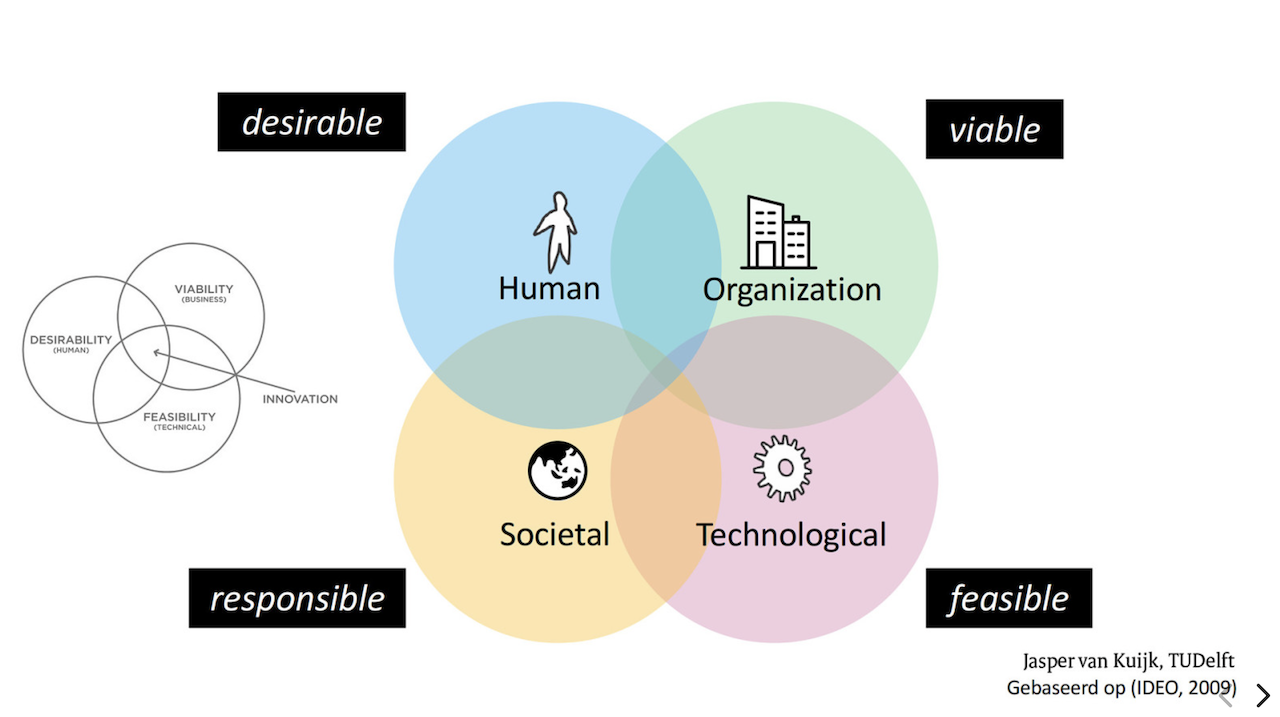
‘Start with the human lens’, of course, but real innovation only takes place when you look from all four lenses.
Collective values are coordinated in a political process and elaborated in laws and policy. When we bring this legislation to the public at the government, we usually first make a business case and then choose the most efficient technical implementation. The usability (the lens ‘human’) is often tested at the end, if we are lucky.
When I place these lenses on my timeline you see them coming back in different layers. In this presentation at CSSDay 2022 I elaborated this with the help of a case from the gas extraction in the Netherlands.
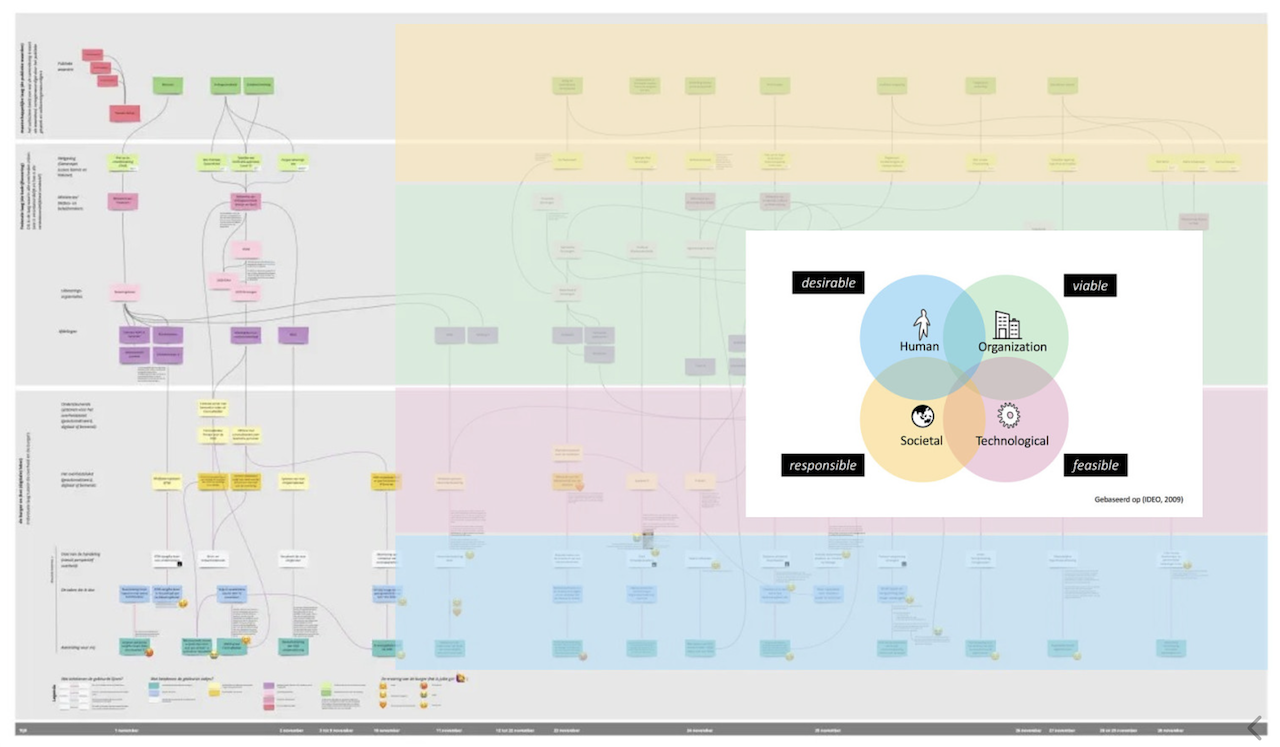
In my previous studies (such as The Compassionate Civil Servant) I came to the conclusion that the government has designed itself as a relay race from law to counter. In doing so, it easily forgets the social purpose (the yellow layer) and finds it difficult to take into account the living environment of citizens (the blue layer).
The green and pink layers become a world in itself, a system world that becomes leading for what and how the relationship between government and citizens is.
In recent years, there has been an increasing call for government policy and services that does take into account the perspective of citizens, how legislation works out for them in their lifeworld (human lens) and whether this will lead to the society we envisioned ( social lens).
At the same time, implementing organizations experience that this is a problem. They are not designed to take this into account. They are driven (and financed) from silos and have to deal with sometimes volatile political wishes and technical debt from the past.
How can this be done? That is what I want to find out in the coming years.
Together with TU Delft and the government’s implementing organizations, I will work on this issue step by step in practice. That means together with you.
How we’re going to do that, I don’t know exactly yet. But it is certain that I want to do it openly and from practice. From now on you can follow every step on this blog and find ways how you can participate, yourself and/or with your organization.
The easiest way to follow this adventure is through my newsletter (Dutch). Here I share updates, summaries, jokes, questions to you every month and I will make sure you don’t miss anything. I will write the first at the end of this month. Subscribe here.
In the next blog I will share my journey so far. A look behind the scenes at how (and with whom) I developed this idea last year.
